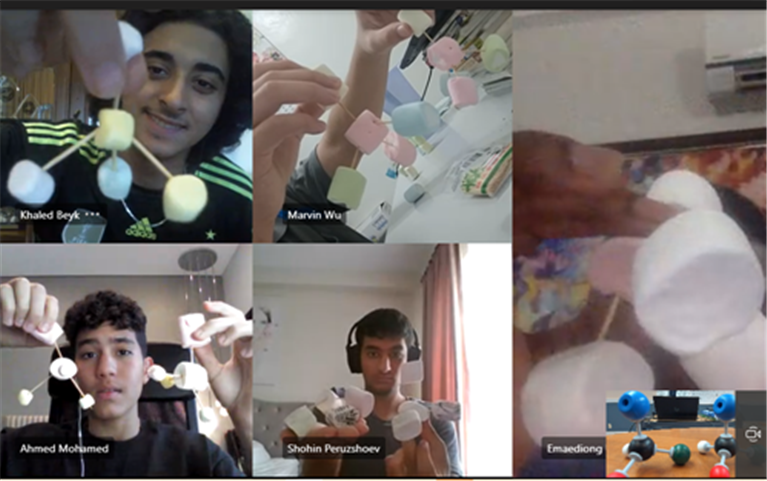What does Experiential Learning look like?
Published Bernice on Tuesday, December 1, 2020 12:00 AM

As we are continuing to face the challenges that 2020 has given us, We are trying to provide our agents with as much information on our synchronous learning, so that those who would like to get started and don’t want to wait any longer, can sign up with MPS. Once students can travel again, the transition over to our boarding experience is really easy.
We continue to offer hands-on experiential learning opportunities. What does that mean and how does that look like? Even while virtual through our live real-time synchronous learning with sophisticated tracking cameras following the teacher’s movements, and highly sensitive microphone and speaker allowing students and teacher to easily communicate, our teachers are creating amazing hands-on experiential learning opportunities for our students.
Here are a few examples of the past couple weeks and how students were involved:
Arthropod Classification Lab - Grade 11 Biology
Our live real-time synchronous learning platform is just like being in class on campus – including labs!
In September a fun and interesting grade 11 biology arthropod classification lab: students are creating a dichotomous key of arthropods using their knowledge of classification systems. They will organize and classify the 15 organisms given to them in class. Fun, engaging and experiential learning at its best – even when teaching synchronously!
Marshmallow Lab - Grade 12 Chemistry
Ever wonder what grade 12 chemistry and marshmallows have in common?
Well, come join MPS and learn about stereoisomers and enantiomers using marshmallows and toothpicks! … even when learning Synchronously we provide real-time hands-on fun experiential learning!
Potlatch – Grade 10 First Nations Class
Ever wonder what a Potlatch is? Well, join our grade 10 First Nations, Metis and Inuit class and find out. This will be a great celebration for our students from around the world to learn about Indigenous peoples of the west coast.
DIGITAL MICROSCOPE – GRADE 11 BIOLOGY LAB
In October our grade 11 biology class will be using our new state-of-the-art digital microscope to draw biological diagrams of mitosis and organisms representing five of the different classification kingdoms.
WATER SAMPLES FROM AROUND THE WORLD – GRADE 11 BIOLOGY
In October our grade 11 biology students, located in five different countries, will collect water samples from their local water way. The sample will then be examined under our state-of-the-art digital microscope and students will do a comparative analysis of their findings, including drawing biological diagrams of the microscopic organisms discovered. What a brilliant international education and global study on biological diversity and pollutants.
POLYMER CREATIONS – GRADE 12 CHEMISTRY
Our grade 12 chemistry students, located in five different countries, will be performing a chemistry lab on polymer creation. Using white glue and corn starch or borax, students will observe the formation of polymers when they mix these materials together in their home kitchens as part of the grade 12 chemistry class. Students from different countries will be using slightly different materials and a comparative analysis will be conducted as part of the lab report and a discussion on the properties of materials that form polymers. With a class of five students, the teacher is always available to assist and guide and take the students beyond the grade 12 curriculum so that they are prepared for university well beyond their peers.
Previous Article Promote Your School Next Article



